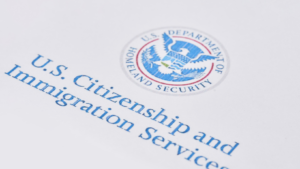In an ever-shrinking world, it’s essential to equip the next generation with a global perspective. As educators, the task lies in our hands to shape K-12 students into responsible global citizens.
Let’s ensure they’re ready to tackle global issues with empathy, understanding, and informed action.
Teaching Citizenship and Global Issues to K-12 Students
Why It Matters
At the forefront of education, the teaching of citizenship and global issues to k-12 students plays a pivotal role. The gravity of the matter becomes evident in the understanding that students exist in an increasingly multicultural, interconnected world. Thus, knowledge of current global issues, along with citizenship values, seeds a foundation for understanding and interacting within this diverse landscape.

Take the scenario wherein the curriculum addresses climate change, one of the most pressing global issues. Educating students about its impact fosters a heightened sense of responsibility and encourages eco-friendly practices, enhancing their ability to meet global environmental challenges. Furthermore, when students grapple with weighty topics, such as human rights and poverty, empathy and a sense of shared humanity are promoted.
Moreover, learning about diverse cultures and values — cornerstones of global citizenship — equips students with tools to handle social interactions effectively in a cosmopolitan environment. Bypassing stereotypes, misjudgments, and intolerance, they can build bridges of communication and understanding.
Benefits for Young Learners
Teaching citizenship and global issues at a young age presents significant benefits. Predominantly, it enhances students’ ability to view issues from multiple perspectives, fostering critical thinking skills — a crucial 21st-century competency. Examining something as complex as peace conflicts, for example, not only broadens knowledge but also encourages debate, reflection, and informed decision-making.

Moreover, learning about global issues cultivates empathy and social responsibility. When students understand the implications of poverty in developing nations, they’re more likely to engage in actions that champion social justice and equity.
Additionally, teaching about diverse cultures develops appreciation and respect for diversity. This knowledge also contributes to improved social skills, as students apply concepts of empathy and understanding in their daily interaction with peers from different cultural backgrounds.
Integrating and teaching citizenship and global issues to K-12 students prepares students holistically for their future, enhancing social skills, fostering critical thinking, promoting empathy, and encouraging active involvement in addressing global concerns. Incorporating such facets in education presents an opportunity for students to grow into responsible, informed global citizens.
Curriculum Design for Citizenship Education
In designing a curriculum for citizenship education, teachers carve a path for K-12 students to develop a deeper understanding of citizenship and global issues. This section delves into the key factors to be considered, including integrating global issues into learning and adopting age-appropriate teaching strategies.

Incorporation of global issues into the curriculum forms an essential component of citizenship education. It’s paramount from an early stage that students develop an understanding of pressing global matters like climate change, societal inequality, and sustainable development. Teachers can achieve this objective by embedding such themes within core subjects. For instance, within science lessons, students can explore the impacts of climate change, its causes, and potential solutions. Similarly, historical studies can examine past societal structures to better comprehend current global disparities. This integrated approach not only enhances students’ knowledge base, but concurrently cultivates a sense of civic duty to participate in global problem-solving.
Final Thoughts
Teaching citizenship and global issues to K-12 students isn’t just crucial—it’s a necessity. By understanding diverse cultures and promoting social responsibility, we’re preparing the next generation to tackle global challenges head-on. Innovative teaching methods, such as project-based learning and multimedia use, are key to engaging students and fostering critical thinking. Formative assessments play a pivotal role in tracking student progress, offering real-time feedback, and stimulating critical analysis of global issues. Furthermore, reflective thinking exercises, like journaling, can deepen comprehension, enhance problem-solving skills, and cultivate a nuanced understanding of global citizenship. It’s clear that integrating these elements into K-12 education is instrumental in nurturing responsible, globally-aware citizens.
